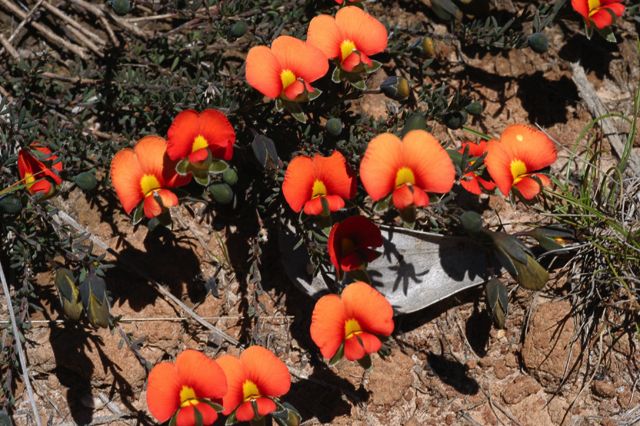The Nature Ramble on Monday 14th November was led by Penne Kwiat. The area she chose was the western border of the autumn burn along Mt Ingoldsby Road.
We walked down a track which had been burnt on one side and was unburnt on the other. It was very interesting to note the types of growth and the flowers which differed on the two sides. Needless to say, the burnt area was much richer with flowers.

Penne
The Tufted Lobelia, which we saw on the last Nature Ramble, was again in this area. But a second variety was also present and just coming into flower, the Tall Lobelia, with its long, stout, reddish stems and a one-sided spike of intense blue flowers with white throats.

Tall Lobelia
There was a patch of delightful Blue Pincushions under the trees and a few stems of Blue-spike Milkwort.

Blue Pincushions
Lots of the low-growing Dwarf Wedge-peas were flowering, mostly bright orange rather than red or yellow.

Dwarf Wedge-pea
Another low-grower was the Small Poranthera, which has a tiny cluster of white flowers in its branchlets – they look green from a distance. It is quite a common plant and appears annually in a variety of habitats.
Two different fringe lilies were appearing, the Branching Fringe Lily with violet-blue flowers and no leaves, and the Common [not common in our area] with pinkish-purple flowers and long, thin leaves.
A large colony of onion orchids was found under some eucalypts, and scattered through the whole area were Leek Orchids and a few remaining Mantis Orchids.
It was a most interesting walk enjoyed by a group of twelve Angair members and a couple of Melbourne school-girl visitors learning about the environment.
Chris Morrissey